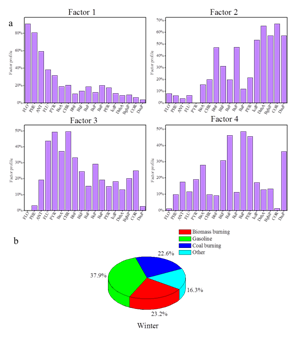Publication
Characteristics and major sources of carbonaceous aerosols in PM2.5 from Sanya, China
TIME:2015-05-26 SOURCE:
FONT:【Big | Middle | Small】 【PRINT】
Sanya is a popular tourist destination where locates in the southernmost tip of Hainan Island, China. Very limited environmental monitoring has been done in Sanya, and even a lack of study on its carbonaceous PM2.5. This work here reports on the concentrations of organic carbon (OC) and elemental carbon (EC) in additional to the concentrations and compositions of selected non-polar organic species, including PAHs and n-alkanes, on the PM2.5 aerosols loaded filter samples collected in Sanya city in 2012 and 2013. The concentrations of these carbonaceous matters were generally higher in winter than summer. The estimated secondary organic carbon (OCsec) accounted for 38% and 54% of the total organic carbon (TOC) in winter and summer, respectively. The higher value of OCsec in additional to the presences of photochemically-produced PAHs in summer support that photochemical conversions of organics are much active at the higher air temperatures and with stronger intense solar radiation. Carbon preference index (CPI) and percent contribution of wax n-alkanes suggest that anthropogenic sources were more dominant than derivation from terrestrial plants in Sanya. Diagnostic ratios of atmospheric PAHs further indicate that there was a wide mix of pollution sources in winter while fossil fuel combustion was the most dominant in summer. Positive Matrix Factorization (PMF) analysis with 18 PAHs in the winter samples found that motor vehicle emissions and biomass burning were the two main pollution sources, contributing 37.5% and 24.6% of the total quantified PAHs, respectively (Fig. 1). Because of numbers of the sample collecting in summertime, the PMF analysis was not done in summer. The information acts as a complement to the current chemical database on national PM2.5 in China.

fig.PMF source apportionment result of sample in winter
Copyright © 2014 Key Laboratory of Aerosol Chemistry and Physics,Chinese Academy of Sciences

